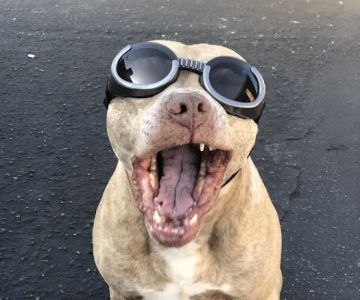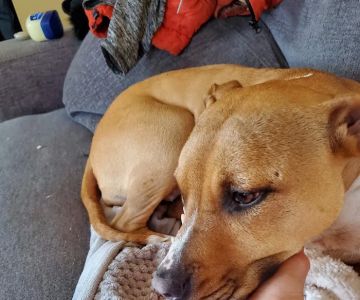How to Treat Cat Hot Spots: A Complete Guide for Cat Owners
If you've ever noticed your cat excessively licking, biting, or scratching at a specific area of its skin, you might be dealing with a hot spot. These painful and irritated areas of the skin are a common issue for cats, and as a cat owner, it’s essential to know how to treat them properly. As someone who’s dealt with hot spots on my own cat, I can tell you that understanding the causes, symptoms, and treatment options can make a huge difference in your cat’s comfort and health.
Hot spots, also known as acute moist dermatitis, are localized areas of skin inflammation that can be caused by a variety of factors, including allergies, flea infestations, poor grooming, or even stress. These spots are usually red, inflamed, and often wet or oozy, which is why it’s so important to treat them promptly to avoid infection and further irritation. In this article, I’ll walk you through the causes, symptoms, and step-by-step treatments for cat hot spots, helping you get your feline friend back to feeling comfortable again.

1225 Warren Ave, Downers Grove, IL 60515, USA
See Details1. What Are Cat Hot Spots and What Causes Them?
Hot spots are a type of skin irritation that results from excessive licking, scratching, or biting at a particular area. The constant irritation leads to the skin breaking down, which creates an environment where bacteria can thrive. Hot spots are commonly seen on cats with thick fur or those who are prone to allergies. My cat, Luna, developed a hot spot after a particularly stressful event, and I quickly learned how critical it is to identify the root cause early to avoid escalation.
Common causes of hot spots include:
- Flea Infestations: Fleas are one of the most common culprits of hot spots. When a cat scratches to relieve the itching caused by fleas, it can create an open wound, leading to a hot spot.
- Allergies: Cats can have allergic reactions to food, pollen, dust mites, or other environmental factors. These allergies can cause intense itching and lead to the development of hot spots.
- Poor Grooming: Cats with matted fur or who don’t groom themselves regularly may develop hot spots. The lack of proper grooming allows bacteria and moisture to build up on the skin, creating the perfect breeding ground for infections.
- Stress: Cats are sensitive creatures, and stress can cause them to over-groom, leading to hot spots. Luna’s hot spot was triggered by a change in our household routine, which caused her anxiety and led to excessive licking.
2. Recognizing the Symptoms of Hot Spots in Cats
Hot spots can develop quickly, and as a pet owner, it’s important to recognize the symptoms early to prevent them from worsening. The first sign that something is wrong is often your cat’s behavior—excessive licking, scratching, or biting at a particular area of its body. If you catch the problem early, the treatment process will be much easier and faster.
The key symptoms of hot spots in cats include:
- Red, Inflamed Skin: The affected area will typically appear red and inflamed, often accompanied by hair loss. The skin may also be tender to the touch.
- Moist or Oozing Skin: Hot spots often become wet or oozy due to the continuous licking or biting. This moisture can make the condition worse if not addressed promptly.
- Foul Odor: As the skin breaks down, bacteria can cause an unpleasant smell. This is often a sign of infection.
- Behavior Changes: Your cat may act more restless or agitated due to the discomfort caused by the hot spot. They might also avoid certain activities or grooming due to the pain or irritation.
As soon as you notice these signs, it’s important to take action to treat the hot spot and prevent it from spreading. I remember how quickly Luna’s small patch of irritated skin became a much larger issue, so I knew I had to act fast.
3. How to Treat Hot Spots on Cats: Step-by-Step Guide
Once you’ve identified a hot spot on your cat, the next step is treatment. While some cases may resolve on their own, most hot spots require intervention to heal properly and avoid infection. Here's a step-by-step guide on how to treat your cat's hot spot effectively:
1. Clean the Affected Area
The first step in treating a hot spot is cleaning the area to remove any dirt, debris, or discharge. Use a mild antiseptic solution, such as saline or chlorhexidine, and a soft cloth or cotton ball to gently clean the wound. Be careful not to scrub too hard, as this could irritate the skin further. I found that cleaning Luna’s hot spot carefully helped reduce the risk of infection and prepared the area for proper healing.
2. Trim the Fur Around the Hot Spot
Next, trim the fur around the hot spot to allow better airflow to the affected area. This helps the wound dry out and prevents bacteria from getting trapped in the fur. Use a pair of blunt-ended scissors or a pet trimmer to avoid accidental cuts. If you’re not comfortable trimming the fur yourself, a trip to the vet or groomer is a good option. Keeping Luna’s fur trimmed around the hot spot was one of the key steps in speeding up her recovery.
3. Apply a Topical Medication
After cleaning the area and trimming the fur, apply a topical medication recommended by your vet. This could be a soothing cream or antibiotic ointment to prevent infection and promote healing. If the hot spot is particularly large or severe, your vet may prescribe a stronger treatment, such as a steroid cream, to reduce inflammation. I used a hydrocortisone cream on Luna’s hot spot, which helped alleviate the itching and discomfort.
4. Prevent Your Cat from Licking or Biting the Hot Spot
One of the biggest challenges in treating hot spots on cats is preventing them from licking or biting the affected area. I had to use an Elizabethan collar (also known as an E-collar) on Luna to stop her from aggravating the spot. While E-collars are not the most comfortable, they are essential for ensuring that the hot spot heals without further disruption.
5. Monitor and Follow Up
Keep an eye on the hot spot to ensure it is healing properly. If you notice that the area is not improving or is getting worse, it’s important to consult your vet. In some cases, oral antibiotics or other treatments may be necessary. Luna’s hot spot healed within a week, but I continued to monitor the area and keep her from licking the spot until it was fully healed.
4. When to Seek Veterinary Help for Cat Hot Spots
While many hot spots can be treated at home, there are times when you should seek veterinary help. If the hot spot is large, showing signs of infection, or not improving despite your efforts, it’s important to consult your vet. Additionally, if your cat seems to be in extreme pain, is running a fever, or exhibits other concerning symptoms, it’s best to have a professional evaluation. My vet was incredibly helpful when Luna’s hot spot didn’t improve after a couple of days, and they recommended a more potent treatment to speed up her recovery.
5. Preventing Hot Spots in the Future
Preventing hot spots is the best way to ensure your cat stays comfortable and healthy. Regular grooming, flea prevention, and addressing any allergies or skin conditions promptly can reduce the chances of hot spots developing. I’ve found that keeping Luna’s fur tangle-free and ensuring she gets flea treatments regularly has significantly reduced her risk of hot spots.
Additionally, managing stress and anxiety is key, especially for cats like Luna who tend to over-groom when feeling anxious. Creating a calm, stimulating environment for your cat can help prevent the psychological factors that lead to hot spots.
Dealing with cat hot spots can be challenging, but with the right approach, you can help your cat heal quickly and comfortably. By staying vigilant and taking proactive steps, you can prevent future outbreaks and ensure your cat’s skin stays healthy and irritation-free. If you’re unsure about any part of the treatment process, always consult your veterinarian for the best advice. For more guidance on cat skin care and health, visit [Hidden Brook Veterinary] for expert advice and resources.










